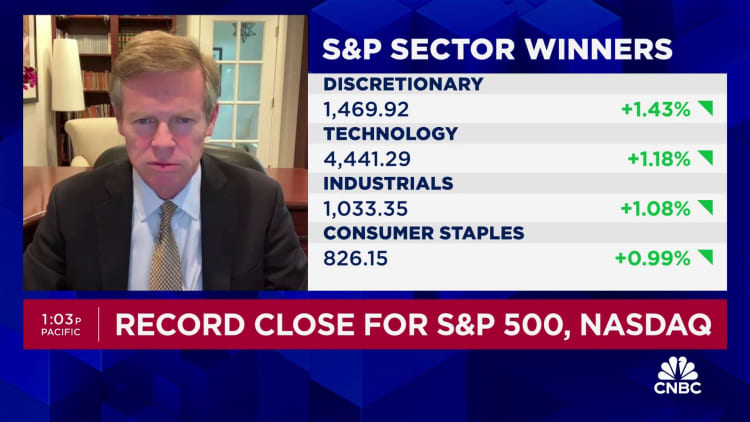
Is the U.S. stock market too ‘concentrated’? Here’s what to know
CNBC
The 10 largest U.S. companies accounted for 14% of the S&P 500 stock index a decade ago. Today, they account for more than a third. Tech euphoria has helped drive up the “Magnificent Seven” stocks: Apple, Amazon, Alphabet, Meta, Microsoft, Nvidia and Tesla. Some experts fear that such concentration may put investors at risk. Others think it’s not a big deal. Jensen Huang, co-founder and chief executive officer of Nvidia Corp., displays the new Blackwell GPU chip during the Nvidia GPU Technology Conference on March 18, 2024. David Paul Morris/Bloomberg via Getty Images
The U.S. stock market has become dominated by about a handful of companies in recent years. Some experts question whether that “concentrated” market puts investors at risk, though others think such fears are likely overblown.
Let’s look at the S&P 500, the most popular benchmark for U.S. stocks, as an illustration of the dynamics at play.
The top 10 stocks in the S&P 500, the largest by market capitalization, accounted for 27% of the index at the end of 2023, nearly double the 14% share a decade earlier, according to a recent Morgan Stanley analysis.
In other words, for every $100 invested in the index, about $27 was funneled to the stocks of just 10 companies, up from $14 a decade ago.
That rate of increase in concentration is the most rapid since 1950, according to Morgan Stanley.
It has increased more in 2024: The top 10 stocks accounted for 37% of the index as of June 24, according to FactSet data.
The so-called “Magnificent Seven” — Apple, Amazon, Alphabet, Meta, Microsoft, Nvidia and Tesla — make up about 31% of the index, it said.
‘A bit riskier than people realize’
Some experts fear the largest U.S. companies are having an outsized influence on investors’ portfolios.
For example, the Magnificent Seven stocks accounted for more than half the S&P 500’s gain in 2023, according to Morgan Stanley.
Just as those stocks helped push up overall returns, a downturn in one or many of them could put a lot of investor money in jeopardy, some said. For example, Nvidia shed more than $500 billion in market value after a recent three-day sell-off in June, dragging down the S&P 500 into
CNBC
The full article is available here. This article was published at CNBC Finance.
Comments are closed for this article!